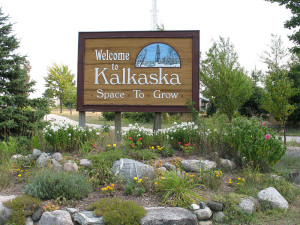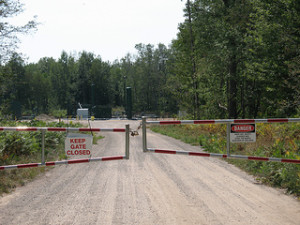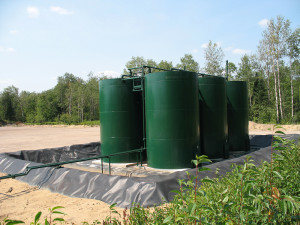
By Diane L. Dupuis, FLOW Senior Advancement Advisor
I have long sought a deeper understanding of the parallels to be found in the Great Lakes water protection work undertaken by both FLOW and the Anishinaabe nations. Recently I came across an academic paper whose title seemed to point to these parallels: Zaagtoonaa Nibi (We Love the Water): Anishinaabe community-led research on water governance and protection. I discovered instead that the paper highlights many concepts that FLOW’s work does not directly address.
After defining Indigenous knowledge as “a way of life that is embodied by Indigenous Peoples in their relationships with Creation,” the paper asserts that “an important aspect of Indigenous knowledge is the acknowledgement of the lands and the waters themselves as relatives and teachers, as significant sources of knowledge.” Further, the authors note that Indigenous law is “conceptualized as original instructions and ‘respectful relationships and accords of reciprocity and responsibilities.’” This law, they write, “emanates from the sacred. . . . Sacred nibi inaakonigewin (water law) is fulfilled through conduct and daily practice—it is a way of life.”
The paper went on to articulate specific tenets within nibi inaakonigewin (water law):
a. Water has spirit
b. We do not “own” water
c. Water is life
d. Water can heal
e. Women are responsible for water
f. We must respect the water
g. Water can suffer
h. Water needs a voice
I wanted to explore these water laws in more depth and then share what I learned with other non-native members of FLOW’s audience. But it didn’t feel right for me to presume to explain these concepts; they were not present in the cultural context I absorbed as a lifelong Michigan resident with colonizer/settler ancestry dating back four centuries in what is now North America.
Happily, FLOW works shoulder to shoulder on a daily basis with tribal partners throughout the Great Lakes Basin, and is fortunate to be guided by a Board of Directors that includes two members of the Grand Traverse Band of Ottawa and Chippewa Indians: Matthew L.M. Fletcher, an expert on Anishinaabe legal and political philosophy and the Harry Burns Hutchins Collegiate Professor of Law at the University of Michigan; and JoAnne Cook, Tribal Appellate Court judge and former Chief Judge of the Little Traverse Bay Band of Odawa Indians. They suggested that I speak with Eva Petoskey to deepen my understanding.
Eva L. Petoskey, M.S. is an elder and enrolled member of the Grand Traverse Band of Ottawa and Chippewa Indians with over 45 years of experience working with tribes and tribal organizations on initiatives supporting wellness, healing, and culture. Currently, she serves on the Leadership Council for the Mindimooyenh Healing Circle, a 501(c)(3) Indigenous-led organization that supports healing and wellness using the Indigenous concept of Mindimooyenh, elder women’s wisdom, leadership, love, and compassion. She has also worked at the Inter-Tribal Council of Michigan, the University of Minnesota-Duluth, the Minnesota Indian Women’s Resource Center, and the Great Lakes Inter-Tribal Council of Wisconsin. Eva served on the Tribal Council of the Grand Traverse Band for six years, four years as the Vice-Chairperson. She spoke with me in late September.
Eva generously expanded on the water laws I had found in “Zaagtoonaa Nibi (We Love the Water).”
Water has spirit
Petoskey: Water is spirit, a spiritual being manifested physically. Water is a living being, just like humans are. Like humans, water is a spiritual being having a physical experience, a being that we are in relationship with. She has many faces. Water is our mother, our relative, our teacher. More than her physical presence, she is spirit.
We do not “own” water
Petoskey: Look carefully at human behavior, how ego-centric and ethnocentric humans are, with relationship to all the rest of creation. We are incredibly dependent creatures, very vulnerable; our minds can be very misleading when they act alone. One of the teachings in the Anishinaabe way of life is humility, and one way to understand humility from an Anishinaabe point of view is to think about what you might experience if you were fasting. You would be acutely aware of how fragile you are as a human being, how dependent you are on the water, the fire, and food. If you go without, you gain awareness and humility, and understand what the condition of the human being should be: one who lives with gratitude, respect, and humility for all the beings that make our life possible; water is one of the most essential beings.
Water is life
Petoskey: Water is essentially entwined into our life, shared in the hearts of all humans, all other creatures. She’s the lifeblood of Earth. By touching her, you also touch that life-giving presence that has created and sustained us all. That’s who she is.
Water can heal
Petoskey: Water has life-giving and healing properties. Every being owes their life to the water. The water cared for each and every one of us developing in the womb. The water is a powerful force, and the Anishinaabe way of life teaches to walk in balance with that force. It’s a way of giving back to someone who has sustained you as you were developing.
Women are responsible for water
Petoskey: All humans have a responsibility to the water, and all women have a special responsibility. In our Anishinaabe way of life, women are responsible for caring for the water and praying for the water, and we take a leadership role; it’s a sacred relationship. That special relationship recognizes how tied women’s bodies are to the cycles of the water. In bringing new humans into the world, a woman’s body carries the water that holds the child. We are held and nourished in the womb’s water, and when our heart first beats, it beats in the water, held by the water. That heartbeat is the heartbeat of life, of the drum. Our heartbeats are the water’s heartbeats; what happens to our heart happens to her heart. Our rhythms are her rhythms. All of that rhythm of life happens to her rhythms. Now and over time, women have been called to work for the health of the water. A lot of women are out there doing that work, raising consciousness, offering special prayers, and working as lawyers. Our songs are her songs. And there are many songs in the Anishinaabe way that recognize and honor that.
We must respect the water
Petoskey: Water has been here since the creation of life as we know it on Earth. Water is one of the first elements of life. Water deserves the same respect as every spiritual tradition would accord to original creation. If you touch your foot into the water here, you are also touching her body on the opposite side of the world, it’s all connected. This is the kind of consciousness that we should walk with every day in order to understand who she is. If we could walk with that consciousness, we would understand how beautiful and nurturing and ever-present that she is everywhere.
Water can suffer
Petoskey: All the water that came when the earth was created is still here, and in that way she is strong and she is eternal. All creation knows her, but humans have forgotten. Even though the water is strong, she walks in our hearts now, and she requires our care and love. No one wants to be in a relationship where you’re constantly on guard, even if you are powerful. The relationship we want is the reciprocal nature of respect, care and love. How many people have forgotten that? The way to remember is to contemplate when you place your foot in the water, you’re connecting to the water across the whole planet. That act alone connects you with so much flowing life.
Water needs a voice
Petoskey: Because water has life, it’s possible for us to communicate with her. Water has rights as a living being, not just in relationship to the human benefit, but in relationship to the web of life. I am engaged in a process to make a proclamation about the water. We are putting our voice to our truth, not in reaction to someone’s lawsuit, but rather out of gratitude and respect for the water.











